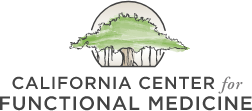How to Manage Inflammation in Lyme Disease
Infection with Borrelia burgdorferi, the bacterial cause of Lyme disease, and co-infections causes the immune system to launch a profound inflammatory response. While antibiotic treatments, such as doxycycline and cefuroxime, can destroy B. burgdorferi, these drugs do little to mitigate the inflammatory response launched in response to these microbes. Left untreated, Lyme-induced inflammation damages cells, tissues, and organs, inducing widespread bodily dysfunction.
While the CDC offers recommendations for Lyme disease treatment from the antimicrobial perspective, it makes no recommendations as to how affected individuals should manage the inflammatory side effects of the illness. Functional medicine, on the other hand, offers a unique set of tools for managing Lyme-associated inflammation, including nutrition changes, lifestyle changes, and natural anti-inflammatory compounds. These holistic interventions can significantly improve Lyme disease inflammation, creating a strong foundation for healing.
Swap the SAD Diet for Anti-Inflammatory Diet
When it comes to managing inflammation, diet is the perfect place to start. The foods you choose to eat can either help or hinder your recovery from Lyme disease by impacting your body’s inflammatory burden. The Standard American Diet, rich in refined carbohydrates and industrial seed oils, increases the expression of pro-inflammatory cytokines, immune molecules that trigger an inflammatory response. Many of the same pro-inflammatory cytokines triggered by the SAD diet are also triggered by Lyme disease and other tick borne infections.1 The SAD diet is also associated with an impaired immune response, which is the last thing you want when you’re battling an infection.2 Other food groups, such as gluten and dairy, can also trigger inflammation and are best avoided by people with Lyme disease.
Conversely, eating an anti-inflammatory, nutrient-dense diet can accelerate your recovery process and create a foundation for long-term health. At CCFM, we recommend that most patients begin a Paleo Reset Diet. This diet is designed to reduce inflammation and improve digestion, energy, blood sugar control, and body weight. The Paleo Reset Diet is centered around the following foods:
- Non-starchy vegetables; ideally 6-8 cups of vegetables across the color spectrum (“eat the rainbow”)
- Whole fruits
- Pastured and organic meat, poultry, and eggs
- Seafood
- Starchy tubers, such as sweet potatoes and cassava
- Organ meats, such as beef or chicken liver
- Bone broth
- Healthy fats such as extra virgin olive oil, coconut oil, coconut milk, avocado, nuts, and seeds
The Paleo Reset Diet is a powerful strategy for reducing Lyme-related inflammation that can be further customized throughout your healing journey, as needed for your unique case. Some of the additional nutrition interventions that we frequently prescribe, on a case by case basis include:
- Autoimmune paleo diet (AIP)
- Low FODMAP diet
- Microbial reset diet
- Ketogenic diet
- Low histamine diet
- Low oxalate diet
- GAPS diet (a powerful reset program in cases of severe gut inflammation)
- Gluten free diet (gluten, dairy, soy, and corn are common trigger foods, among others)
- Elimination and reintroduction diet
Incorporate Anti-Inflammatory Foods
To target Lyme-induced inflammation, you may also want to consider incorporating the following anti-inflammatory foods into your diet, including:
- Omega-3 fatty acids: Preclinical research indicates that the omega-3 fatty acids EPA and DHA can balance the inflammatory response in Lyme disease by impacting populations of immune signaling molecules.3 We recommend that Lyme patients consume at least 3-4 servings of fatty cold-water fish, preferably wild-caught, per week as a source of omega-3 fatty acids. When selecting seafood, use the acronym SMASH to remember which types of seafood are the most nutrient-dense and lowest in mercury – salmon, mackerel, anchovies, sardines, and herring.
- Cruciferous vegetables: Cruciferous vegetables such as broccoli and cauliflower provide sulforaphane, a phytochemical that reduces inflammation via the anti-inflammatory Nrf2 cellular signaling pathway.4 Activation of the Nrf2 pathway creates glutathione, which your body needs to manage Lyme-induced inflammation and mount a healthy immune response.5 Microgreen and broccoli sprouts are also an excellent source of sulforaphane and are easy and fun to grow at home.
- Fermented foods: Fermented foods such as sauerkraut and kimchi contain probiotic bacteria and other bioactive compounds that reduce gut inflammation and improve the immune system of the gut, which has significant effects on systemic immune function.
Many people with tick borne diseases struggle with food sensitivities and gastrointestinal issues. If you would like one-on-one help with your nutrition, our staff nutritionist, Lindsay Christensen, can work with you to create a customized nutrition program designed to help facilitate your healing process.
Sleep
Sleep disruption is a common symptom of Lyme disease. However, high-quality sleep is also essential for recovery due to its impacts on all body systems, especially the immune system and inflammation. A lack of sleep and poor-quality sleep depresses the immune system while increasing inflammation.6 Improving your sleep is an essential step in managing Lyme-associated inflammation.
Engaging in simple “sleep hygiene” practices before bed can improve the restorative quality of your sleep and may aid in reducing inflammation. Consider incorporating the following practices into your nightly routine:
- Aim for 8-9 hours of sleep a night. Research suggests that this is an ideal sleep target for most adults.
- Eat your last meal of the day at least three hours before bed. Eating too close to bedtime can reduce the restorative quality of your sleep.
- Wear blue-light-blocking glasses for at least an hour before bed. These glasses block out wavelengths of light that disrupt the production of the hormone melatonin. Your body needs melatonin to initiate and sustain sleep. Melatonin also has powerful anti-inflammatory properties.7
- Sleep in a dark, cool room. The ideal ambient temperature for sleep appears to be ~67 degrees Fahrenheit or colder.
- Create a relaxing bedtime routine. Try doing a nightly guided meditation or listen to soothing music before bed to help your body enter parasympathetic "rest, digest, and repair" mode.
Anti-Inflammatory Interventions for Lyme
Beyond diet and sleep, several botanicals and nutraceuticals can be useful for alleviating inflammation associated with Lyme and other tick borne diseases.
Curcumin
Curcumin is a compound found in bright orange turmeric root, a staple of Traditional Chinese Medicine, and Indian Ayurvedic medicine. Curcumin is a “golden child” of the supplement industry, and for a good reason; it has powerful anti-inflammatory effects that make it an excellent alternative to NSAIDs for inflammation management and pain relief.
Curcumin demonstrates significant benefits in the alleviation of arthritic inflammation and gut and brain inflammation.8,9 Curcumin exerts anti-inflammatory effects by blocking the activation of NF-κB, a pro-inflammatory signaling pathway heavily involved in Lyme-induced inflammation.10
Japanese Knotweed
Japanese Knotweed is a central component of several popular herbal protocols for Lyme disease. It is rich in resveratrol, a phytochemical with potent anti-inflammatory properties.11,12
Cat's Claw
Cat's Claw (Uncaria tomentosa) is a tropical climbing vine with sharp, curved thorns native to the Amazon rainforest of South America. The medicinal use of the inner bark of the vine dates back 2,000 years to the Inca civilization. To this day, Peruvian Ashaninka priests regard the plant as sacred, using it for healing and in religious ceremonies.
Cat's Claw contains potent alkaloid compounds with anti-inflammatory and antibacterial properties.13 Clinical trials indicate that the alkaloids found in Cat's Claw are particularly beneficial for alleviating inflammation, possibly by modulating the body’s immune response.14,15 These findings suggest that Cat's Claw alkaloids may also mitigate arthritic symptoms in chronic inflammatory conditions such as Lyme disease.
Glutathione
Glutathione functions as a vital antioxidant throughout the body, including within the nervous system. It also plays important roles in detoxification. The immune system requires glutathione to mount an attack against Borrelia burgdorferi;16 as a result, glutathione levels in chronic Lyme patients can become depleted over time. Supplemental glutathione, and supplements like alpha lipoic acid (ALA) and N-acetyl cysteine (NAC) can help boost glutathione and reduce inflammation caused by Lyme, as well as support the immune system. Eating a diet rich in sulfur rich foods such as cruciferous vegetables, vitamin C, and selenium can also help boost your body's natural glutathione production.
CBD
Cannabidiol (CBD), a non-psychoactive phytocannabinoid found in the hemp plant, also offers powerful anti-inflammatory properties.17 It can improve inflammation in the musculoskeletal system, brain, and gastrointestinal tract, targeting multiple body systems impacted by Lyme and other tick borne diseases.
Anti-Inflammatory Strategies Work in Synergy with Antimicrobial Treatments
Inflammation management is an essential component of a comprehensive Lyme and TBD treatment protocol. Treating the infection without also managing the inflammatory response can make antimicrobial treatment challenging to tolerate; conversely, implementing strategies that alleviate inflammation can make your Lyme treatment experience much more effective and comfortable. Our clinicians at CCFM are experienced in helping patients navigate Lyme-induced inflammation during the treatment process, and can help you select the best comprehensive anti-inflammatory interventions to meet your needs.
References
- Cerar T, et al. Diagnostic value of cytokines and chemokines in Lyme neuroborreliosis. Clin Vaccine Immunol. 2013; 20(10): 1578-1584.
- Statovci D, et al. The impact of Western diet and nutrients on the microbiota and immune response at mucosal interfaces. Front Immunol. 2017; 8: 838.
- Pratt CL and Brown CR. The role of eicosanoids in experimental Lyme arthritis. Front Cell Infect Microbiol. 2014; 4: 69.
- Houghton CA, et al. Sulforaphane and other nutrigenomic Nrf2 activators: Can the clinician's expectation be matched by the reality? Oxid Med Cell Longev. 2016; 2016: 7857186.
- Kerstholt M, et al. Role of glutathione metabolism in host defense against Borrelia burgdorferi infection. PNAS. 2018; 115(10): E2320-E2328.
- Mullington JM, et al. Sleep Loss and Inflammation. Best Pract Res Clin Endocrinol Metab. 2010; 24(5): 775-784.
- Favero G, et al. Melatonin as an anti-inflammatory agent modulating inflammasome activation. Int J Endocrinol. 2017; Article ID 1835195.
- Hewlings SJ and Kalman DS. Curcumin: A review of its effects on human health. Foods. 2017; 6(10): 92.
- Burge K, et al. Curcumin and intestinal inflammatory diseases: Molecular mechanisms of protection. Int J Mol Sci. 2019; 20(8): 1912.
- Zhao Z, et al. NF-κB is a key modulator in the signaling pathway of Borrelia burgdorferi BmpA-induced inflammatory chemokines in murine microglia BV2 cells. Mol Med Rep. 2018; 17(4): 4953-4958.
- Fan P, et al. Anti-inflammatory activity of the invasive neophyte Polygonum Cuspidatum Sieb. and Zucc. (Polygonaceae) and the chemical comparison of the invasive and native varieties with regard to resveratrol. J Tradit Complement Med. 2013; 3(3): 182-187.
- de Sa Coutinho D, et al. Anti-inflammatory effects of resveratrol: Mechanistic insights. Int J Mol Sci. 2018; 19(6): 1812.
- Navaro-Hoyos M, et al. Proanthocyanidin characterization and bioactivity of extracts from different parts of Uncaria tomentosa L. (Cat’s Claw). Antioxidants (Basel). 2017; 6(1): 12.
- Mur E, et al. Randomized double blind trial of an extract from the pentacyclic alkaloid-chemotype of uncaria tomentosa for the treatment of rheumatoid arthritis. J Rheumatol. 2002; 29(4): 678-681.
- Castilhos LG, et al. Effect of Uncaria tomentosa extract on purinergic enzyme activities in lymphocytes of rats submitted to experimental adjuvant arthritis model. BMC Complement Altern Med. 2015; 15(189): doi: 10.1186/s12906-015-0694-4.
- Kersthold M, et al. Role of glutathione metabolism in host defense against Borrelia burgdorferi infection. PNAS. 2018; 115(10): E2320-E2328.
- Atalay S, et al. Antioxidative and anti-inflammatory properties of cannabidiol. Antioxidants; 2020; 9(1): 21.






